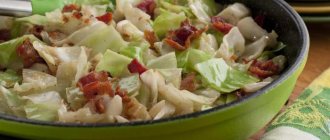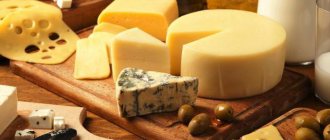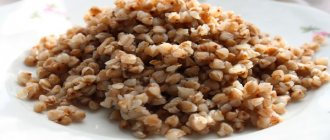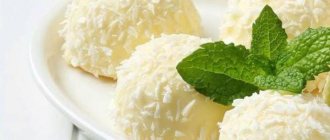Hazelnuts have many beneficial properties. But you need to use the nut very carefully. Not all people know that kernels have a fairly high calorie content. It even exceeds the number of calories in chocolate. To maintain your figure and provide the body with a supply of vitamins, minerals and other nutrients, you need to eat nuts without exceeding the permissible daily intake. To do this, you need to know how many kcal are contained in hazelnuts.
Calorie content
Hazel fruits have one of the highest energy values among other types of nuts. The most common varieties include:
- Badem. The nuts have long and slightly flattened fruits.
- Crimean hazelnut. The round kernels are protected by a very thin shell.
- Kerasund. The fruits have a conical shape, the shell is thin.
To learn more about the valuable nut, you need to pay attention to the BJU ratio, as well as its glycemic index.
100 grams of raw hazelnuts contain:
- 628 kcal;
- 15.5 gr. squirrel;
- 60.8 gr. fat;
- 16.7 gr. carbohydrates;
- glycemic index – 15.
To correctly calculate your daily intake, you need to know the calorie content of 1 piece of hazelnut. To do this, you must first find out the weight of one nut. On average, one nut without shell weighs about 1 gram.
Accordingly, in 1 piece:
- 6.28 kcal;
- 0.15 gr. squirrel;
- 0.61 gr. fat;
- 0.17 gr. carbohydrates;
Reference!
The energy value of hazelnuts is 628 kcal per 100 g of raw product. During heat treatment, the calorie content of nuts changes.
The calorie content of hazelnuts per 100 grams of product exceeds chocolate by 8 times. Thanks to its unique composition, hazelnuts are many times more satisfying and nutritious than foods familiar to every person. This applies to meat, fish, bread and even milk. Unlike these products, hazelnuts contain much less carbohydrate. Based on this, we can conclude that the calorie content of nuts is determined only by proteins and fats.
Application
The medicinal and nutritional properties of hazelnuts allow them to be used in pharmaceuticals, the production of perfumes and cosmetics, as well as in cooking. Whole and crushed hazelnuts are used to prepare gourmet dishes, cocktails and drinks.
Market Analytics
- COVID-19 is changing the rules of the game in the cosmetics market
- Beauty of the future: cosmetic innovations 2020
- New ingredients are the driving force of the cosmetics industry
Convenient search for beauty salons on our website
Beauty salons in Moscow Beauty salons in St. Petersburg Beauty salons in Ekaterinburg Beauty salons in Novosibirsk
Latest blog posts on our website
- Naturecream / Geranium (Pelargonium) oil for skin health and beauty
- Prostye-sovety / Save on a beauty salon: procedures that can be done at home
- Naturecream / Growth Factor - brings back youth?
- Oksana-Lezina / 3 effective abdominal exercises from a fitness instructor for beginners
- Prostye-sovety / Making perfect curls at home
- Prostye-sovety / Which hair removal method to choose
- Naturecream / Wrinkles Puppets
- Naturecream / PEPHA-TIGHT - instant skin lifting
- Naturecream / Blue light - a danger to the skin
- Naturecream / Cocoa Butter – A treat for the skin
Latest forum topics on our website
- Mrs._Smith / Badly sunburned! What to do?((
- Ice / Is it necessary to combine fitness classes with a diet?
- Antonova / What can be used for hair loss?
- Radio operatorKat / Who was on a protein diet?
- Suzanna / Mesotherapy on the face
Other articles in this section
| Candied melon Melon has been known to people for about four thousand years, and candied fruits from it have existed for the same, or almost as long, time. Melon was a sacred fruit in ancient Egypt and was offered as a sacrifice to the gods. At the same time, melon was grown in Asia. It spread widely in the countries of the East, where it was highly valued for its refreshing taste and ability to quench thirst. In European countries, this berry was also very popular, and it began to be grown in almost all countries. |
| Pine nuts Pine nuts are the seeds of Siberian pine. An evergreen coniferous tree, which bears fruit on average once every 5 years, produces about 12 kg of harvest. Pine nuts are small grains of pale yellow color. In terms of price, they are one of the most expensive. They are usually sold in purified form. Nuts are widespread in eastern and western Siberia. |
| Dates The date palm has small fruits - these are dates. These fruits are very popular on the planet and are consumed by humans in the form of dried fruits. Only certain types of dates are used in the food industry. |
| Candied pears Candied pears are fruits boiled in sugar syrup and then candied during the drying process. |
| Walnut Walnut belongs to the southern culture. A long-lived tree that begins to bear fruit at the age of 10 and is capable of producing up to 400 kg of fruit per year. Nuts are also called “acorns of the gods” or “food for the mind.” The fruit is a bivalve drupe, inside of which there is a four-layered seed. It grows in many countries - Ukraine, Central Asia, the Caucasus, China, Moldova, France. |
| Sun-dried cherries Cherries are one of the most popular stone fruit crops growing in central Europe. To date, more than 200 varieties of domestic and foreign selection have been bred. Cherry berries are small in size, bright red in color and have a pleasant sweet and sour taste. |
| Cashew Cashew occupies a special place in the world of gourmet nuts. It is the fruit of an evergreen tree that originally grew in South America and was eventually transported to Europe. The fruit of the cashew tree consists of two parts: the cashew apple and the nut itself. The nut ripens in a dark, hard shell on top of a juicy, bright apple. The nut shell itself can be dangerous to human skin; contact with it can cause burns and blisters, so cashew nuts are carefully removed from the shell before being sold. They are then thermally treated until the oil completely disappears. |
| Apple chips Thin slices of apples that have undergone sublimation (vacuum drying) are commonly called apple chips. Dried apples can be considered their predecessor, but unlike them, apple chips can be stored much longer without loss of quality and have a pleasant crunch. |
| Dried rose hips The history of using rose hips as a medicine goes back many centuries. It originally grew in the foothills of the Himalayas, but over time it spread throughout the world. Rose hips were first mentioned in Russia in chronicles of the 12th century. Its medicinal properties were so valued that the price of the fruits was close to that of expensive fabrics. At the same time, in Uzbekistan, rose hips for medicinal purposes were given only to noble people and only by special order. In medieval Europe, monasteries took their tithes from rose hips. |
| Brazil nut Brazil nut is one of the tallest trees in the Amazon rainforest. Its fruits are contained in oval boxes, which are quite impressive in weight - the weight can reach 2 kilograms, and the diameter is -15 centimeters. The homeland of Brazil nuts is South America. The fruits of the tree are collected only in wild forests. The main consumers of nuts are animals, birds and insects. |
Calories after processing
Not all people eat hazelnuts raw. To understand how useful the product is after various heat treatment options, it is necessary to consider how the number of calories changes, as well as the ratio of kbju.
| Hazelnut | Kcal | Squirrels | Fats | Carbohydrates |
| Fried | 703 | 17,8 | 66,1 | 9,4 |
| Dried | 667 | 14,3 | 61,0 | 13,4 |
| Blanched | 629 | 13,7 | 61,1 | 6 |
| In Apple pie order | 590 | 8,6 | 48,0 | 40,0 |
How many calories are in hazelnuts?
Here's how much:
The calorie content of raw hazelnuts, per 100 grams, is:
Proteins, fats and carbohydrates (BJU) of hazelnuts in gr. per 100 grams:
Proteins - 15.0
Fats – 61.5
Carbohydrates – 9.4
A:
Calorie content of roasted hazelnuts, per 100 grams, is:
Proteins, fats and carbohydrates (BJU) in gr. per 100 grams:
Proteins - 16.1
Fats – 66.9
carbohydrates – 9.9
And here:
The calorie content of dried hazelnuts, per 100 grams, is:
Proteins, fats and carbohydrates (BJU) in gr. per 100 grams:
Proteins - 16.0
Fats – 66.0
carbohydrates – 10.0
How are hazelnuts good for weight loss?
And more on this topic:
Hazelnuts are well suited for dietary nutrition due to their low carbohydrate content. A bag of hazelnuts and a small amount of dried fruit perfectly replaces unhealthy “snacks” with sandwiches. It allows you to organize proper nutrition, but not overeat and gain weight.
This nut contains biologically active substances such as phytosterols, flavonoids, carotenoids, which help maintain a healthy weight.
In Spain, a study was conducted for more than 2 years, in which almost 10 thousand adults participated. It turned out that with approximately the same diet, “nut eaters” are one third less likely to gain excess weight than those who do not eat hazelnuts.
For those losing weight, the main thing is not to go too far with calories and fats. Therefore, as we have already said, you need to consume no more than 50 grams of nuts in the main meal or 30 grams as a snack. And these are the maximum numbers! Moreover, your diet should be structured so that the total number of calories per day is no higher than 1300-1700.
How to store
It is best to choose hazelnuts in shell. This immediately significantly reduces the likelihood of purchasing a low-quality product. You need to visually examine the nut kernels for rot, mold, and various mechanical damage. Then you need to shake the hazelnuts. Dried nuts will make a hollow sound. It is better to avoid such a product. High nutritional value, as well as benefits for the body, are concentrated in juicy and fresh fruits. They make virtually no sound when shaking. The nut will take up all the space inside the shell.
To store hazelnuts, it is better to opt for the refrigerator. The kernels are placed in paper bags or canvas bags. In this form, hazel will remain useful for several years.
Tips for eating nuts
We looked at the nutritional value of hazelnuts per 100 grams, as well as its calorie content. As you can see, the product is very healthy, but extremely high in calories. If you do not want to harm either your diet or your health, it should be consumed thoughtfully and in moderation.
- For people engaged in heavy physical labor, the nut will be an excellent fuel and source of energy. If you plan to unload the carriage or move from fifth to fifth (including carrying furniture), feel free to put a generous handful in your pocket;
- If you lead a sedentary lifestyle, and all planned physical activity comes down to carrying your body from the office to the elevator, then to the car and home to the sofa, your measure is 5 nuts;
- The ideal amount of nuts per day for a person with moderate physical activity is 25 g;
- If you are on a diet and planning a healthy snack, you are allowed to eat 6-8 nuts. This snack is best enjoyed in the first half of the day;
- It is better not to fry the product, not to salt it or sweeten it. Eat it raw, you can lightly dry it - this will give you more benefits and less calories;
- Hazelnuts go perfectly with dried fruits and berries and are better absorbed if they are pre-soaked in cold water for a couple of hours.
We suggest you read: How to dry nuts in the oven
Excessive consumption of the product is fraught with headaches, constipation, bloating, and allergic reactions. Never eat nuts with mold - this is an extremely dangerous carcinogenic compound.
In conclusion, let's make a small conclusion. Due to their high calorie content, the body's need for nuts can be easily satisfied with small quantities. Rest assured, this is enough to get pleasure, satisfy your hunger, and also fully absorb the vitamin and mineral complex. Everything is good in moderation!
Useful qualities
People use several names for this unique nut. Among them:
- large hazel;
- Lombard nut;
- hazelnuts.
Regardless of what the name is, this will not take away from it all the beneficial properties for the human body. Nuts are high-calorie foods. Nutritionists do not recommend getting carried away with fruits. If you eat a lot of nuts every day, this can cause rapid weight gain in the form of extra pounds, which will negatively affect a person’s figure.
Carefully!
To prevent negative consequences, hazelnuts should be eaten in accordance with the recommended daily dosage. If you follow this simple rule, then after a while you can notice a number of positive changes in the functioning of the body. The functioning of a person’s internal organs and systems will improve, and the deficiency of vitamins and minerals will be compensated.
The beneficial properties are determined by the unique composition of the product. Nuts contain 60% of essential oils. They consist of the following acids:
- oleic;
- stearic;
- palmitic.
They keep the level of bad cholesterol in the blood under control. Therefore, hazelnuts are recommended for use by people who have been diagnosed with diseases related to the cardiac system and blood vessels. For prevention, the US Food and Drug Administration recommends consuming 43 grams of nuts daily.
Composition and beneficial properties
We’ve sorted out the hazelnut KBJU, now let’s list the remaining components that the product is rich in:
- Vitamin B complex;
- Vitamins A, K, E, C, PP;
- Alpha Carotene, Beta Carotene;
- Betaine;
- Among the macroelements, we note potassium, calcium, magnesium, sulfur and phosphorus;
- Microelements include iron, manganese, copper, selenium, zinc;
- Digestible carbohydrates, a whole complex of essential and non-essential amino acids, sterols;
- Fatty acids: palmitic, stearic, arachidic, linoleic, Omega-3, 6, 9.
The list is impressive, isn't it. Now, let's find out what benefit we get from all this.
- Due to the high content of B vitamins, regular consumption of this nut has a positive effect on the nervous system. Their deficiency also leads to disruption of the heart, vascular and digestive systems;
- The product reduces cholesterol, increases hemoglobin, improves blood composition;
- It has the property of thinning the blood, and therefore nuts are prescribed for varicose veins, thrombophlebitis and other vascular diseases;
- Antioxidants, which are in abundance in our nut, turn it into an effective anti-aging agent;
- The product strengthens the immune system, helps in the fight against inflammation, infections and even bad tumors;
- The nut has anti-carcinogenic properties and is prescribed to people with cancer;
- The small-looking nut perfectly strengthens bones and muscles, makes ligaments and joints more elastic;
- Helps crush and dissolve kidney stones;
- Improves the quality of breast milk;
- Positively affects the potency and composition of sperm;
- Hazel fruits are protein-rich foods; they can even replace a piece of meat.
Hazelnuts contain unique oils that are essential for the human body, and many other beneficial substances:
- Fatty acids (palmitic, oleic, omega-6) make up 60% of the nut. They are not produced in the body and therefore must be obtained from food. Fatty acids help accelerate lipid metabolism, blood microcirculation, and tissue regeneration.
- Vegetable protein (20%). Participates in the formation of muscle and bone tissue.
- Almost all amino acids (20 types). Participate in the synthesis of hormones and hemoglobin.
- A large number of microelements: copper, potassium, phosphorus, sulfur, magnesium, calcium, manganese, iron, sodium, zinc.
- Vitamins: A, E, PP, C, group B.
Thanks to its rich chemical composition, hazelnuts benefit the human body. When following a vegetarian diet, it replaces meat as it contains natural protein.
Nuts contribute to:
- increasing the elasticity of blood vessels and cleansing them of cholesterol plaques;
- normalization of blood sugar levels;
- improving blood circulation in the brain;
- strengthening hair, teeth and bones;
- restoration of the body after a protracted illness or vitamin deficiency;
- cleansing the body of toxins;
- strengthening the immune system and increasing the body's resistance to infectious diseases;
- improving the functioning of the gastrointestinal tract: hazelnuts speed up the process of food absorption, prevent fermentation in the intestines, eliminate constipation and bloating.
We suggest you familiarize yourself with How to store cauliflower at home: is it possible in an apartment, cellar, fresh, for the winter, for how long, how to properly organize storage?
Nuts are eaten to prevent diseases such as:
- arrhythmia and bradycardia;
- heart attack and stroke;
- atherosclerosis.
Nuts are also good for older people - they strengthen bones, increase the body's resistance, and reduce the risk of developing Alzheimer's disease.
Dietary properties of nuts
The hazel fruit has been known to people since ancient times. Throughout time, it has been studied for its beneficial properties. During the research, it was found that the kernels contain a large amount of protein of plant origin, as well as polyunsaturated fatty acids. These properties allow vegetarians to replace various types of meat with hazelnuts.
The main useful properties of the product include:
- Prevention of cardiovascular diseases.
- Prevention of atherosclerosis.
- Cleansing the body of harmful toxins and waste.
- Normalization of metabolic processes.
- Replenishing energy reserves spent during the day.
- Strengthening the body's protective functions.
Hazelnuts are recommended for consumption by a group of people diagnosed with diabetes. According to kbzhu, the composition contains a small amount of carbohydrates. Therefore, nuts can be eaten even on a very strict diet. If you follow the daily norm, the risk of gaining extra pounds is reduced to zero.
The effect of hazelnuts on the body
The benefits of hazelnuts for the body are obvious.
Walnut kernels contain stearic, oleic, and palmitic acids, which reduce cholesterol levels in the blood. Hazelnuts are high in vitamin E, cobalt, potassium and iron. This nut is indicated for weakened immunity and as a prevention of worms. Hazelnuts effectively cleanse the liver and fight cancer. The nut contains paclitaxel, a substance that reduces the likelihood of cancer. And due to vitamin E and protein, rapid growth and active development of muscles is achieved. Hazelnuts are a source of plant proteins that are indispensable for vegetarians. It is filled with polyunsaturated fatty acids that protect the heart and blood vessels from all kinds of damage. Hazelnuts are also indicated for the prevention of atherosclerosis.
The great benefits of hazelnuts for people suffering from diabetes. Due to their weak carbohydrate composition, hazelnuts can be consumed even on strict diets. In addition, hazelnuts actively remove toxins from the liver and prevent harmful putrefactive processes occurring in the intestines.
Eating hazelnuts has some special features. Of course, this nut is useful for many diseases, but it is prohibited for children with advanced forms of diabetes, as well as people with chronic liver diseases. Ideally, only 50 grams of nuts are required per day. If you abuse hazelnuts, you can get a constant headache, which occurs due to vascular spasms.
It is better to purchase hazelnuts in shells. After the nut is shelled, the rapid decomposition of minerals and vitamins immediately begins in the kernels, that is, the hazelnut is completely deprived of its beneficial properties. It is also worth considering that after six months of storage, hazelnuts begin to dry out. Therefore, it is very important to replenish nut reserves in a timely manner and not eat outdated fruits.
How to select and store hazelnuts?
It is best to buy unshelled nuts. With such protection, the likelihood of acquiring spoiled hazel with various bacteria is reduced. Make sure that the shell is free of stains, smooth, and without damage.
The nuts themselves should be strong, round, whole, beige in color with a pleasant nutty aroma.
A cloth bag or paper bag is best for storing unshelled nuts. It is best stored in the refrigerator, so the shelf life can be 2 years. But, the healing properties of hazel begin to decrease significantly after 6 months, so it is better not to delay the use of such a useful product.
It is also better to store shelled nuts in the refrigerator, but no more than two months.
If during storage you notice suspicious spots on the nuts or the smell has changed, then it is better to throw away such fruits.
Calorie content Hazelnut, hazelnut. Chemical composition and nutritional value.
Nutritional value and chemical composition of hazelnuts, hazelnuts.
The table shows the nutritional content (calories, proteins, fats, carbohydrates, vitamins and minerals) per 100 grams of edible portion.
| Nutrient | Quantity | Norm** | % of the norm in 100 g | % of the norm in 100 kcal | 100% normal |
| Calorie content | 651 kcal | 1684 kcal | 38.7% | 5.9% | 259 g |
| Squirrels | 15 g | 76 g | 19.7% | 3% | 507 g |
| Fats | 61.5 g | 56 g | 109.8% | 16.9% | 91 g |
| Carbohydrates | 9.4 g | 219 g | 4.3% | 0.7% | 2330 g |
| Alimentary fiber | 5.9 g | 20 g | 29.5% | 4.5% | 339 g |
| Water | 4.8 g | 2273 g | 0.2% | 47354 g | |
| Ash | 3.4 g | ~ | |||
| Vitamins | |||||
| Vitamin A, RE | 2 mcg | 900 mcg | 0.2% | 45000 g | |
| beta carotene | 0.01 mg | 5 mg | 0.2% | 50000 g | |
| Vitamin B1, thiamine | 0.3 mg | 1.5 mg | 20% | 3.1% | 500 g |
| Vitamin B2, riboflavin | 0.1 mg | 1.8 mg | 5.6% | 0.9% | 1800 g |
| Vitamin B4, choline | 45.6 mg | 500 mg | 9.1% | 1.4% | 1096 g |
| Vitamin B5, pantothenic | 1.15 mg | 5 mg | 23% | 3.5% | 435 g |
| Vitamin B6, pyridoxine | 0.7 mg | 2 mg | 35% | 5.4% | 286 g |
| Vitamin B9, folates | 68 mcg | 400 mcg | 17% | 2.6% | 588 g |
| Vitamin C, ascorbic acid | 1.4 mg | 90 mg | 1.6% | 0.2% | 6429 g |
| Vitamin E, alpha tocopherol, TE | 20.4 mg | 15 mg | 136% | 20.9% | 74 g |
| Vitamin K, phylloquinone | 14.2 mcg | 120 mcg | 11.8% | 1.8% | 845 g |
| Vitamin RR, NE | 5.2 mg | 20 mg | 26% | 4% | 385 g |
| Niacin | 2 mg | ~ | |||
| Macronutrients | |||||
| Potassium, K | 717 mg | 2500 mg | 28.7% | 4.4% | 349 g |
| Calcium, Ca | 170 mg | 1000 mg | 17% | 2.6% | 588 g |
| Magnesium, Mg | 172 mg | 400 mg | 43% | 6.6% | 233 g |
| Sodium, Na | 3 mg | 1300 mg | 0.2% | 43333 g | |
| Sera, S | 190 mg | 1000 mg | 19% | 2.9% | 526 g |
| Phosphorus, Ph | 299 mg | 800 mg | 37.4% | 5.7% | 268 g |
| Chlorine, Cl | 22 mg | 2300 mg | 1% | 0.2% | 10455 g |
| Microelements | |||||
| Iron, Fe | 3 mg | 18 mg | 16.7% | 2.6% | 600 g |
| Yod, I | 0.2 mcg | 150 mcg | 0.1% | 75000 g | |
| Cobalt, Co | 12.3 mcg | 10 mcg | 123% | 18.9% | 81 g |
| Manganese, Mn | 4.2 mg | 2 mg | 210% | 32.3% | 48 g |
| Copper, Cu | 1120 mcg | 1000 mcg | 112% | 17.2% | 89 g |
| Selenium, Se | 2.4 mcg | 55 mcg | 4.4% | 0.7% | 2292 g |
| Fluorine, F | 17 mcg | 4000 mcg | 0.4% | 0.1% | 23529 g |
| Chromium, Cr | 170 mcg | 50 mcg | 340% | 52.2% | 29 g |
| Zinc, Zn | 2.44 mg | 12 mg | 20.3% | 3.1% | 492 g |
| Digestible carbohydrates | |||||
| Starch and dextrins | 5.8 g | ~ | |||
| Mono- and disaccharides (sugars) | 3.6 g | max 100 g | |||
| Essential amino acids | |||||
| Arginine* | 2.3 g | ~ | |||
| Valin | 0.9 g | ~ | |||
| Histidine* | 0.3 g | ~ | |||
| Isoleucine | 0.91 g | ~ | |||
| Leucine | 1.05 g | ~ | |||
| Lysine | 0.54 g | ~ | |||
| Methionine | 0.13 g | ~ | |||
| Methionine + Cysteine | 0.25 g | ~ | |||
| Threonine | 0.57 g | ~ | |||
| Tryptophan | 0.19 g | ~ | |||
| Phenylalanine | 0.6 g | ~ | |||
| Phenylalanine+Tyrosine | 1.16 g | ~ | |||
| Nonessential amino acids | |||||
| Alanin | 0.2 g | ~ | |||
| Aspartic acid | 1.28 g | ~ | |||
| Glycine | 1.19 g | ~ | |||
| Glutamic acid | 3.2 g | ~ | |||
| Proline | 0.77 g | ~ | |||
| Serin | 1.29 g | ~ | |||
| Tyrosine | 0.56 g | ~ | |||
| Cysteine | 0.12 g | ~ | |||
| Saturated fatty acids | |||||
| Saturated fatty acids | 4.4 g | max 18.7 g | |||
| 16:0 Palmitinaya | 3.5 g | ~ | |||
| Monounsaturated fatty acids | 53 g | min 16.8 g | 315.5% | 48.5% | |
| 18:1 Oleic (omega-9) | 53 g | ~ | |||
| Polyunsaturated fatty acids | 6.8 g | from 11.2 to 20.6 g | 60.7% | 9.3% | |
| 18:2 Linolevaya | 6.8 g | ~ | |||
| Omega-6 fatty acids | 6.8 g | from 4.7 to 16.8 g | 100% | 15.4% |
The energy value of hazelnuts and hazelnuts is 651 kcal.
Primary Source: Created in the application by the user. Read more.
** This table shows the average levels of vitamins and minerals for an adult. If you want to know the norms taking into account your gender, age and other factors, then use the “My Healthy Diet” application.









